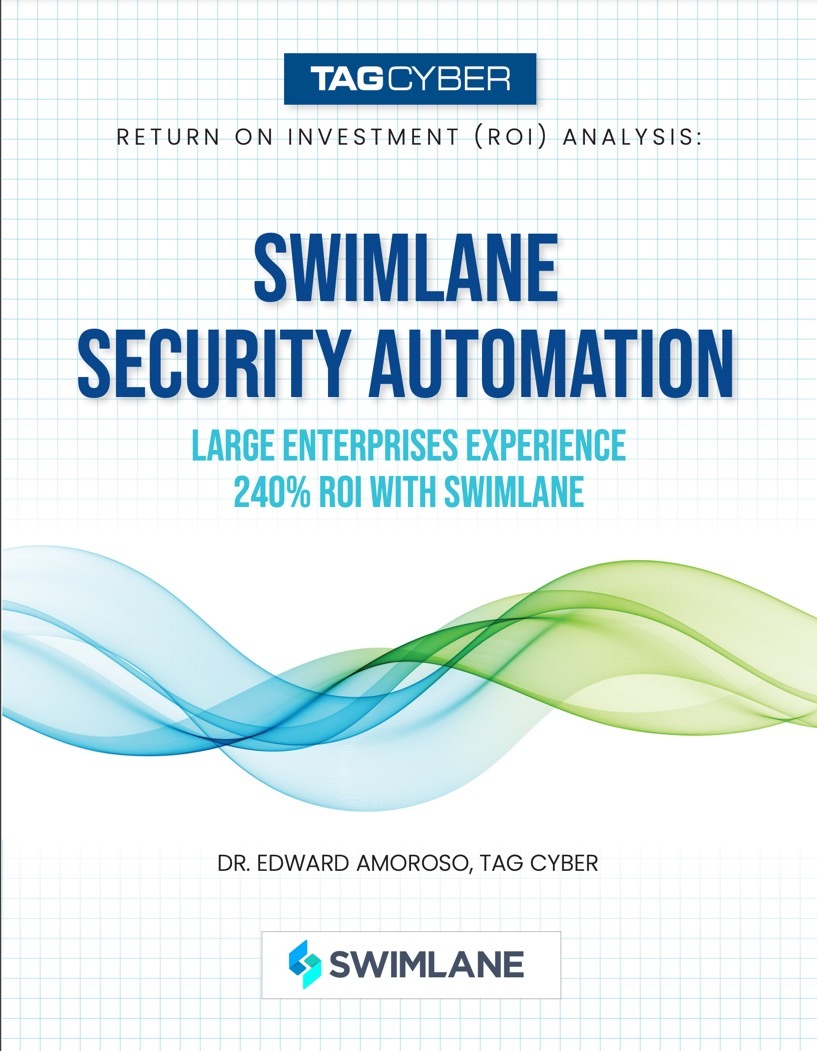Your security operations (SecOps) team deals with a lot of data. But the problem is that security teams are constantly busy putting out fires and fixing the latest vulnerabilities. Where does the time come from to pull security metrics from multiple tools and look at trends? Or even more importantly, how does a CISO show progress and proof of investment to their company leadership? Automation will help, so let’s dive into how and all the security metrics your organization can save time and money on with the right platform. But first, let’s understand what security metrics are.
What are Security Metrics?
Security metrics refer to measurable parameters that are used to evaluate the status of an organization’s systems and services. Metrics include the collection, analysis, and reporting of relevant data, which helps to understand the effectiveness of your security measures, allowing organizations to identify weaknesses and areas of improvement. Ultimately, the security metrics you choose to track should hold influence over your SOC processes and strategy aligning with your overall business KPI. They should also be simple to understand for C-suite and senior executives as they are then used to inform decisions on how to enhance the overall security of the organization.
How to Choose the Right Cybersecurity Metrics
By selecting and tracking the right security metrics, organizations gain valuable insight into their performance and make data-driven decisions to improve the overall security posture. But the metrics chosen depend on your industry, security needs, regulations, guidelines, best practices, and your level of risk. Choose the right metrics by considering these steps:
- Align with Objectives: Selected metrics aligned with the specific organizations security goals and priorities, as well as the assets and data that need to be protected, to maintain relevance and usefulness.
- Relevance: Choose metrics directly related to the organization’s security posture and potential risks.
- Compliance: Prioritize metrics that aid in maintaining regulatory compliance and data protection standards.
- Vulnerability Severity: Track metrics that categorize vulnerabilities based on severity and potential impact to prioritize patching and remediation efforts.
- Risk Exposure: Evaluating metrics that consider factors like threat likelihood, vulnerability severity, and asset value can help in assessing cyber risk exposure.
How Can Security Automation Make Security Metrics Easier?
Now, with the right platform, you can make the task of gathering important security metrics easier. By automating tracking and reporting with a security automation platform, organizations can collect and analyze security data in a more consistent and reliable manner. This data can then be used to generate a dashboard and track key security metrics happening in your SOC environment, such as the number of security incidents, the time taken to detect and remediate threats, and the overall security posture of the organization. Automation also helps in reducing human error and improving response times, allowing security teams to focus on more strategic tasks rather than being preoccupied with manual, time-consuming processes.
Key Security Metrics Examples to Be Aware of
In order to begin tracking security metrics, it’s key to determine what matters to your organization. For example, some security automation metrics that a SOC director might be interested in are:
1. Level of Preparedness
Critical incidents won’t happen every day, but you want to be ready when they do. How long does an incident response in your organization take? Do you have a plan that everyone in your SecOps team understands and can execute quickly?
Instead of waiting for disaster to strike, ensure that your organization creates incident response playbooks to demonstrate the preparedness and effectiveness of your Security Operations Center (SOC). These playbooks will map out how to address various incidents and minimize human error that can occur during high-stress events.
Questions to ask that will help identify your level of preparedness include:
- Is your technology and tool implementation effective? Look at trends over time by the signal source.
- Are there spikes of events from multiple ingest pipelines? How effective is your correlation across your enterprise?
- Where are the gaps in controls, and how are they affecting your risk management program? Look at the MITRE ATT&CK® Enterprise Framework for tactics and techniques.
- What are your residual risks, scores, and priorities? Residual risk is your inherent risk minus your risk control.
2. Number of Vulnerabilities
Vulnerabilities are weaknesses in your system that attackers exploit to gain access or control. Of course, the goal is to have no vulnerabilities, but third-party vendors and software exploits make that impossible. You should track the following vulnerability metrics:
- Vulnerability source (threat models, code reviews, dependency scans, bug bounties, etc.)
- Vulnerability category (authorization, authentication, input validation, configuration, etc.)
- Number of critical vulnerabilities by environment (endpoints, public & private cloud, etc.)
- Number of vulnerabilities that are opened or closed over time
- Are they on the CISA Known Exploited List?
3. Mean Time to Detect (MTTD)
Mean Time to Detect (MTTD) is the average time between the moment an attacker is inside your network and the time you detect them there. This can be measured using various tools, including packet capture analysis and threat intelligence platforms.
4. Mean Time to Resolve (MTTR)
It’s important to look at your security team’s Mean Time to Resolve (MTTR), which signifies how long an organization has been compromised. Resolution times are a major factor in determining the overall impact of an attack on an organization. The longer the resolution, the more damage you can expect.
5. Dwell Time
Dwell time is the duration a threat actor has undetected access in a network until their completely removed. This number should be as low as possible.
6. First-Party Security Ratings
When you’re looking at security metrics, it’s critical to also look at first-party security ratings. These ratings (on scales such as A-F and 1-10) show an organization’s security performance in different security automation use case areas like phishing, SIEM alert Triage, and Threat Hunting. Ratings give you a sense of how much better or worse your organization is performing in comparison to internal and industry standards. They give you a good idea about where you need to invest more resources to improve your organization’s cybersecurity posture.
First-party ratings help organizations understand their own relative risk and progress over time. They also help demonstrate value to customers and partners who may be looking at those same ratings right now. It’s easy to pull MoM and YoY progress for non-technical stakeholders.
How Swimlane Can Help with Security Metrics
It’s important to remember that continuous monitoring and timely incident response are vital to securing your organization. While the exact metrics you should look at will vary based on your specific environment, they remain a crucial way to track the overall health of your security infrastructure. This keeps tabs on new threats in and beyond your SOC.Swimlane and other low-code security automation platforms are an easy choice to ensure resilience and proactive protection against the next major attack.

Calculate your ROI with Swimlane Turbine
To help companies evaluate the potential financial impact of the potential investment, TAG Cyber conducted an extensive study on the Swimlane Security Automation Solution.


